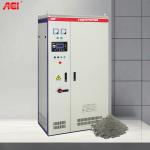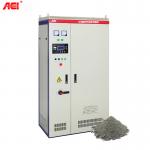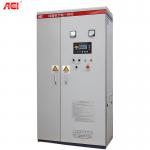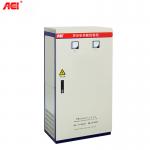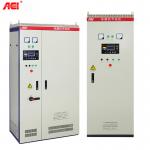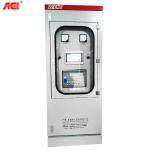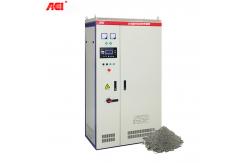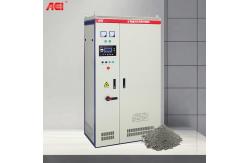ACI DLT Series Mine Hoist Dedicated Energy-Saving CabinetMine Hoist Dedicated Energy-Saving Cabinet is an energy-efficient device designed specifically for mine
hoists. By optimizing motor operation and energy recovery
technologies, it significantly reduces electrical energy
consumption and enhances system efficiency. Below is a detailed
introduction to its core features, technical principles, and
application advantages.
I. Core FeaturesHigh-Efficiency Energy Recovery
Utilizes a dedicated energy feedback unit to convert mechanical
energy (potential and kinetic energy) generated during hoist
deceleration or braking into electrical energy, which is fed back
into the AC power grid for reuse by other equipment, minimizing
energy waste. Variable Frequency Speed Control Technology
Employs a fully digital variable frequency speed control device
(e.g., ABB ACC800 series) to achieve four-quadrant motor operation,
dynamically adjusting motor speed and torque to adapt to load
variations, eliminating the "large motor driving a small load"
phenomenon. Intelligent Control System
Integrates a programmable logic controller (e.g., KDN CPU306
series) for logic control, speed closed-loop control, and safety
protection functions, featuring fault self-diagnosis and remote
monitoring capabilities. High Protection Grade and Reliability
Cabinet design meets the requirements of harsh mine environments,
offering dustproof, moisture-proof, and shock-resistant
capabilities to ensure long-term stable operation.
II. Technical Principles- Motor Operation Efficiency Improvement
- Variable frequency speed control replaces traditional voltage
regulation methods, keeping the motor operating in high-efficiency
zones.
- Reactive power compensation and optimal power factor control reduce
grid losses.
- Energy Feedback and Reuse
- During hoist deceleration, mechanical energy is converted into DC
electrical energy via the motor and frequency converter, stored in
capacitors.
- The energy feedback unit returns the stored energy to the power
grid, avoiding efficiency losses and heat generation from resistor
dissipation.
- Dynamic Parameter Adjustment
- Real-time voltage and frequency adjustments based on hoist
operating conditions (e.g., speed, load) optimize electrical energy
usage efficiency.
III. Application Advantages- Significant Energy-Saving Effects
- Energy savings can reach 30%–45%, particularly beneficial for deep
shafts, frequent-use, or newly installed hoists.
- Reduces heat emissions from resistor dissipation, improving the
environment around control cabinets.
- Extended Equipment Lifespan
- Lowers thermal stress on motors and frequency converters,
prolonging equipment life.
- Stabilizes voltage and frequency, reducing impacts on the power
grid.
- Enhanced Safety
- Full intelligent control and fault self-diagnosis functions ensure
safe equipment operation.
- Comprehensive after-sales warranty services (e.g., 18-month
warranty, lifetime maintenance) reduce maintenance costs.
- Environmental and Economic Benefits
- Reduces electrical energy waste and carbon emissions, aligning with
green mine construction requirements.
- Lowers operating costs and enhances mine profitability.
IV. Selection RecommendationsMatch System Requirements
Choose the appropriate energy-saving cabinet model based on the
hoist's power, shaft depth, and usage frequency. Focus on Technical Parameters
Prioritize energy-saving rates, protection grades, energy feedback
efficiency, and compatibility. Select Reliable Brands
Prefer manufacturers with experience in mine hoist manufacturing
and technical expertise to ensure product quality and after-sales
service. Consider Customization Needs
For special operating conditions (e.g., multi-rope, multi-level
hoists), choose suppliers offering customized solutions.
|
